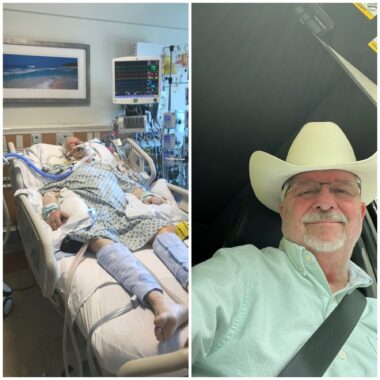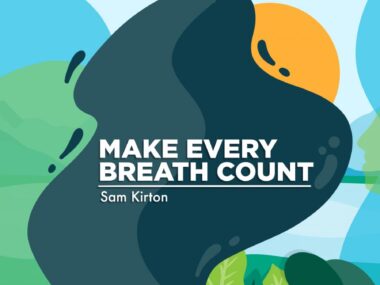4 years after my bilateral lung transplant, I honor the gift of life
My 'lungaversary' prompts reflection on my journey with IPF, transplant
Written by |

This column is scheduled to publish at 10 a.m. Eastern time on July 10, 2025. Four years earlier at this hour, I was undergoing a bilateral lung transplant at Inova Fairfax Hospital here in Virginia. I’d been moved into surgery at 3 a.m., about seven hours earlier. Today, I celebrate my fourth “lungaversary” and honor the legacy of my donor’s gift of life.
My diagnosis with idiopathic pulmonary fibrosis (IPF) in January 2017 was unexpected. Over the following months, I decided that if I were medically eligible for a lung transplant, I’d pursue it.
When I discussed the option with Steven Nathan, a lung specialist at the Inova Fairfax Advanced Lung Disease and Transplant Center, I committed to readying myself for a transplant. I continued to work until September 2017, when I retired and began receiving disability benefits. I also underwent numerous tests and procedures to identify early on any issues that could interfere with me being listed for transplant.
Pulmonary rehabilitation was also an essential part of my preparation for transplant. My sessions were administered by University of Virginia (UVA) Health in Charlottesville. I attended all the sessions covered by insurance and then transitioned to a maintenance program in which I attended sessions twice a week. I worked to walk every day I wasn’t participating in organized pulmonary rehab.
I continued this preparation until March 2020, when COVID-19 hit the United States and UVA Health suspended its in-person pulmonary rehab program. At that point, the preparation was completely up to me. I began to walk every day, regardless of the weather or season.
My case was initially presented to the transplant committee in March 2020, but it was deferred. The surgery wasn’t yet necessary for me, and the hospital was transitioning to care for an increasing number of patients with COVID-19.
Almost one year later, a transplant did become a necessity. My IPF progression had accelerated, and I now needed 7 liters per minute of supplemental oxygen to walk across the room. I was listed in March 2021.
At 9:03 a.m. on July 9, I received the call with a lung offer. Shortly after saying a prayer for my donor and donor family, my wife, Susan, made the 90-minute drive to the hospital. At the same time, the organ recovery team was on the way to my donor.
The lungs required some rehabilitation and underwent a process known as ex vivo lung perfusion. I went into surgery a little before 3 a.m. the next morning, emerged at noon, and remained under anesthesia until about 5 p.m. the following day, July 11. At that point I was extubated and took my first breath with my new lungs. On July 20, I was discharged.
Susan and I had leased an apartment close to the hospital where we stayed for about three months, allowing me to attend pulmonary rehab and multiple post-transplant medical appointments.
Life after a bilateral lung transplant
Now, four years later, I continue to do well. While I’ve had some bumps in the road, pursuing a transplant was the right decision for me. My care team has handled every issue immediately.

At left, Sam Kirton recovers from his bilateral lung transplant in 2021. Today, at right, he’s doing well. (Courtesy of Sam Kirton)
I’ve been able to see my oldest granddaughter, Abigail, grow up and become a rising second-grader. I now have two younger granddaughters, Charlotte and Brooklyn, who, like Abigail, are the definition of human sunshine!
Each year at 9:03 a.m. on July 9, I visit the National Donor Memorial in Richmond, Virginia, to be present for my donor and their family. I still don’t know who they are, but I make the annual pilgrimage to remember the moment I was notified that donor lungs were available. This year was no different.
Each year around July 10, we gather our village — the 13 people who showed up for us on July 9, 2021, and have been so supportive during this journey. This year, only seven of them will be able to join, but we’ll never forget the sacrifices they made to be present for us.
Most importantly, I honor my donor’s gift of life. Their legacy lives on through me. When I sit in the National Donor Memorial, I can look at the donors’ names and listen to the gentle sounds of the water feature. I know that each name represents the gift of life for someone.
It’s my responsibility to make every breath count, and I will not quit.
Note: Pulmonary Fibrosis News is strictly a news and information website about the disease. It does not provide medical advice, diagnosis, or treatment. This content is not intended to be a substitute for professional medical advice, diagnosis, or treatment. Always seek the advice of your physician or other qualified health provider with any questions you may have regarding a medical condition. Never disregard professional medical advice or delay in seeking it because of something you have read on this website. The opinions expressed in this column are not those of Pulmonary Fibrosis News or its parent company, Bionews, and are intended to spark discussion about issues pertaining to pulmonary fibrosis.







Johnny A Lee
Wonderful story. Thank you for sharing and giving me additional strength and determination as I am in the final stages of being added to UNOS. I pray the Good Lord will continue to give his blessings as I move forward to make every breath really count.
Wayne Zealous Burkhead Jr.
Beautifully written. God loves a grateful heart!
Sue
I received my bilateral lung transplant at John Hopkins on Feb. 18, 2025. This has been a long journey that I was afraid never would come. I too have had some hiccups with my recovery-but getting my life back is wonderful. My family, friends, and medical team remind me to take one step at time.
I am so thankful for my medical team & husband, they are my angels who takes care of my drug regimine and give me the support I need.
I can now walk outside to see my flowers, I can go shopping, and spend time with my grqndchildren without worrying if I will have enough oxygen. I even was able to see my granddadughter play softball and her team winning their championship.
I am thankfull everyday for receiving these lungs and will reach out to the family to thank them for giving me a new life. I also know that I have a huge responsibility to continue-and promise to make every day count.
John Gould
Thank you for this Article.
You mention needing 7 LPM to walk across the room just prior to transplant, another post transplant patient I met at the long term motel when I was there for 10 days in May completing my last pre transplant tests and interviews, also said he couldn't walk 10 feet on supplemental O2 just prior to his double lung transplant
I was waitlisted on July 2nd, but during my baseline 6 minute walk tests I walked many, many feet.
My research shows the 6 minute walk test (6MWT) score and how it compares to previous scores is the most significant predictor of 6 month and less mortality for waitlist candidates.
I will be keeping tract of my 6 minute walk tests and comparing them to my earlier ones to see how they compare, I suggest all IPF candidates on the waitlist do the same, as we never know where our placement is compared to others waitlisted at our transplant center, however the waitlist SRTR numbers for our transplant center are insightful.